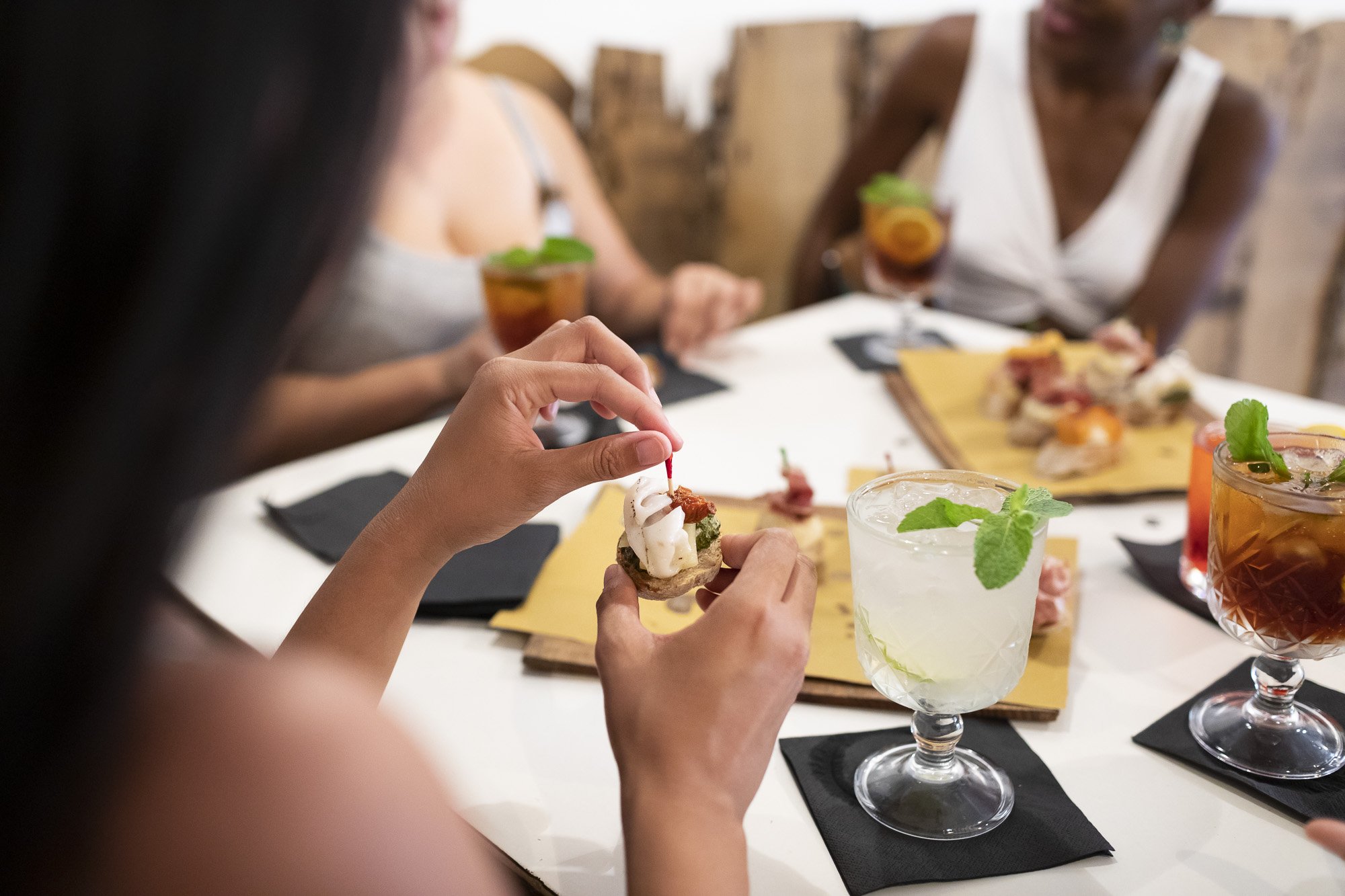Taken at Il Locale Firenze, in our top favorite 5 for best cocktail bars in Florence photo by Tracy Russo
The late Anthony Bourdain summed up the Negroni as the sort of drink that would “hit you like a freight train after four or five”. It’s a fitting tribute to the neon red tipple that is almost as iconic to Italian summers as beautiful people on scooters and endless scoops of pistachio gelato.
But how did a cocktail with a backstory almost as impressive as its alcoholic punch – traditionally made of equal parts Campari, sweet vermouth and gin, the Negroni is deceptively potent – rise from relative obscurity to grace the menu of every cocktail bar in Italy and abroad?
Gary Regan’s The Negroni: Drinking to La Dolce Vita traces the drink back to Florence in 1919 when Count Camillo Negroni walked into the Café Casoni looking for something stiffer than the popular Americano (Campari-like bitter, sweet vermouth and club soda). Negroni had, according to Regan, returned from a stint working as a rodeo clown in the Wild West, and requested the bartender Fosco Scarselli to add gin to his Americano. Enamored by his creation, the Negroni family founded the Negroni distillery, which produced a ready-to-drink version of the cocktail called Antico Negroni in 1919.
There are some disputes over the claim Negroni was a clown, and records show he did work as a professor of fencing.
From there, the drink captured the Italian imagination, becoming a staple in trattorias from Florence to Milan to Rome, where Orson Welles penned this fitting tribute to the Negroni in the Coshocton Tribune: “The bitters are excellent for your liver, the gin is bad for you. They balance each other.”
The cocktail made the leap across the Atlantic in the early aughts with the Campari brand snapping up the Wild Turkey distillery in 2009. The first Negroni week was held four years later and now includes more than 12,000 venues mixing up the classic cocktail to raise money for charities around the world. This year’s celebration has been moved from June 1-7 to September 14-20.
The appeal of the Negroni is in part due to its simplicity. Three ingredients, equal parts, no fancy bartender skills necessary. At a Negroni’s heart is the somewhat enigmatic Campari. Invented by Signore Campari himself — Gaspare Campari — in Novara in 1860, it famously attained its signature color (until 2006) from the crushed shells of the cochineal bug - a soft-bodied, flat, oval-shaped scale insect that likes cactus.
Taken at Manifattura in Florence- one of the top spots for cocktails in the city
photo by Martino Dini
Campari is characterized by rich, orange sweetness and bitter herbal undertones. It’s the ‘more serious’ older brother of another iconic Italian aperitif with which it is often confused – Aperol. While also sold by the Campari Group, Aperol was created by brothers Luigi and Silvio Barbieri in Padua in 1919.
There have been many variations to the traditional Negroni over the decades, including the Negroni sbagliato (mistaken Negroni), a version attributed to an overworked Milanese bartender who mistakenly sloshed in prosecco instead of gin and landed on a winner. British cocktail expert Wayne Collins swapped in Lillet Blanc and Suze for sweet vermouth and Campari, coining the White Negroni, while Jeffrey Morgenthaler, of Portland’s Clyde Common, was one of the first to barrel-age a Negroni.
Other popular artisanal substitutes include the Contessa, a modern creation of John Gertsen, a bartender at Boston's Drink, which replaces Campari for the lighter and more orangey Aperol and dry vermouth substitutes for sweet, and the Count Mast Negroni, in which Jägermeister replaces Campari for a more herbaceous, licorice-scented profile, rounded out by a lemon peel garnish.
But if you feel like sticking to the classic recipe, one of our favorite expert Florentine bartenders, Julian Biondi (drink journalist for Bargiornale, recently shared his tips for making a Negroni in isolation (https://www.youtube.com/watch?v=-XJo9N5MiIQ).
His top tip is to start with plenty of ice in an old fashioned or ‘rocks’ glass. Then layer a “perfetto threesome” of bitters, red Italian vermouth (we love Carpano Antica Formula because it has a great herbaceousness) and a small-batch, independent distillery gin. A Negroni is always stirred, never shaken, and served with a twist of orange for good measure.
Of course, no great cocktail is complete without tasty food pairings. Because of its distinct bitterness, a Negroni needs strongly-flavored foods and bold cheeses. You really can’t go past a good charcuterie board with prosciutto di Parma, which offsets the Negroni with its salty goodness, Alto Adige speck, a cured and smoked meat with bold flavors that really stand out and bresaola (an aired dried salted beef).
A fat-rich cheese like Gruyere and a deeply flavored Pecorino Romano make for some cheese pairing ideas. Scatter the edges of your charcuterie board with almonds, pistachios and some fresh in-season fruit for contrast. Serve with good bread or simple tomato bruschetta with a hit of basil and good EVOO and you’ll be transported to the sun-dappled Florentine streets in no time.
Inspired? Join one of our Craft Cocktail and Aperitivo Tour in Florence where we hack the perfect Negroni while learning about Italy's key liquors and their cultural histories.
If you’re in Florence- you absolutely can’t miss a Negroni from either Caffe Gilli in Piazza della Repubblica or Manifattura in Piazza di S. Pancrazio (near Piazza Goldoni)- these are 2 of our favorite bars in Florence dear to our lush hearts.
To experience classic Italian cocktails, check our favorite bars in Florence












